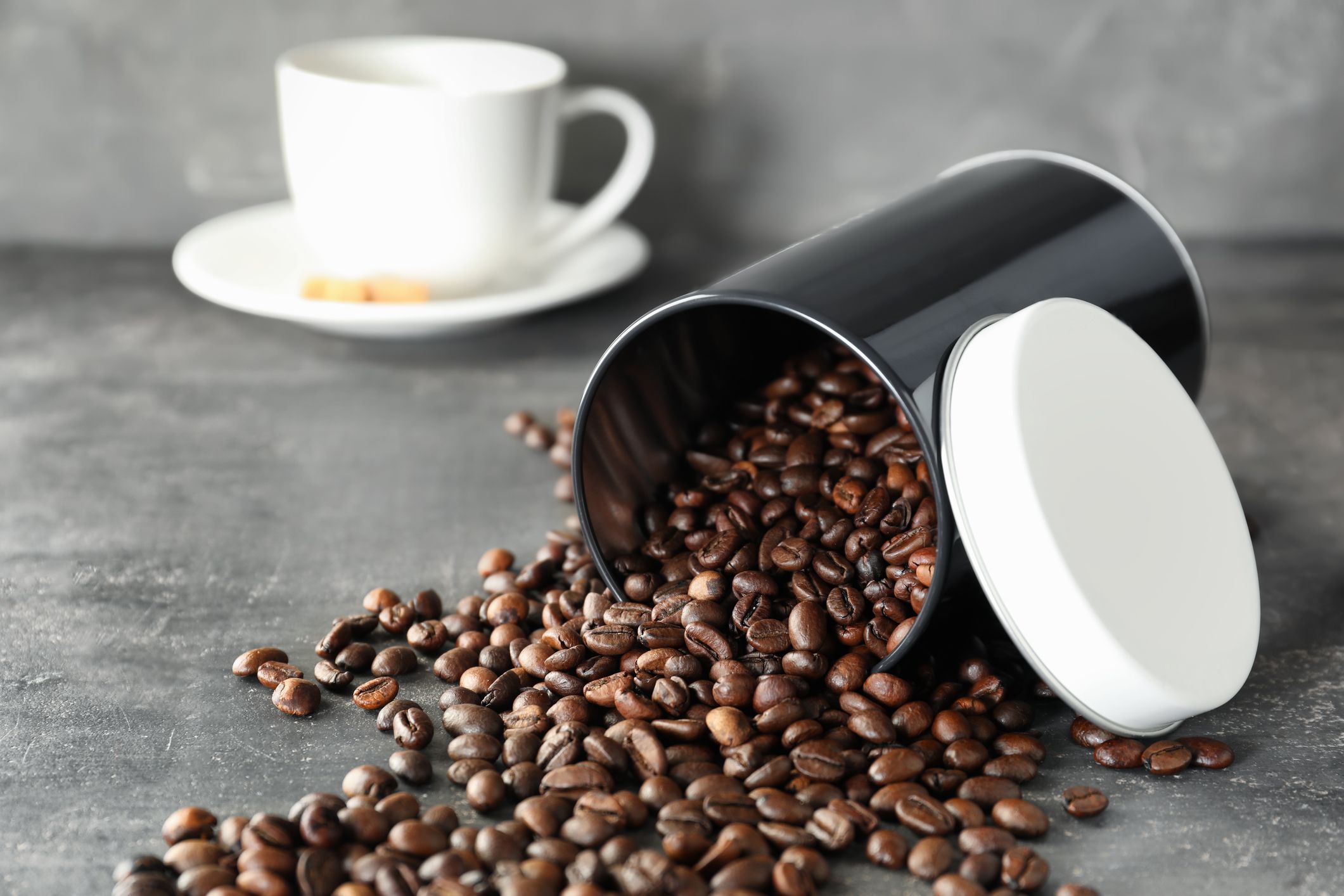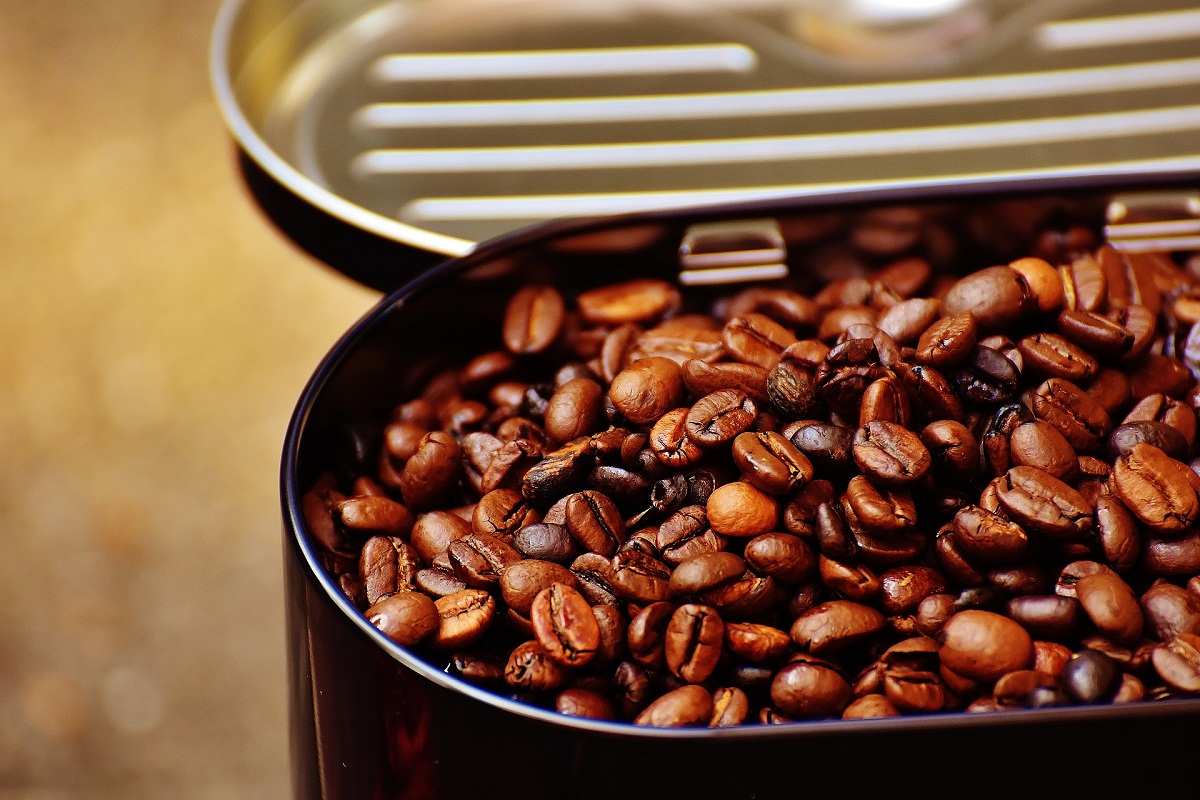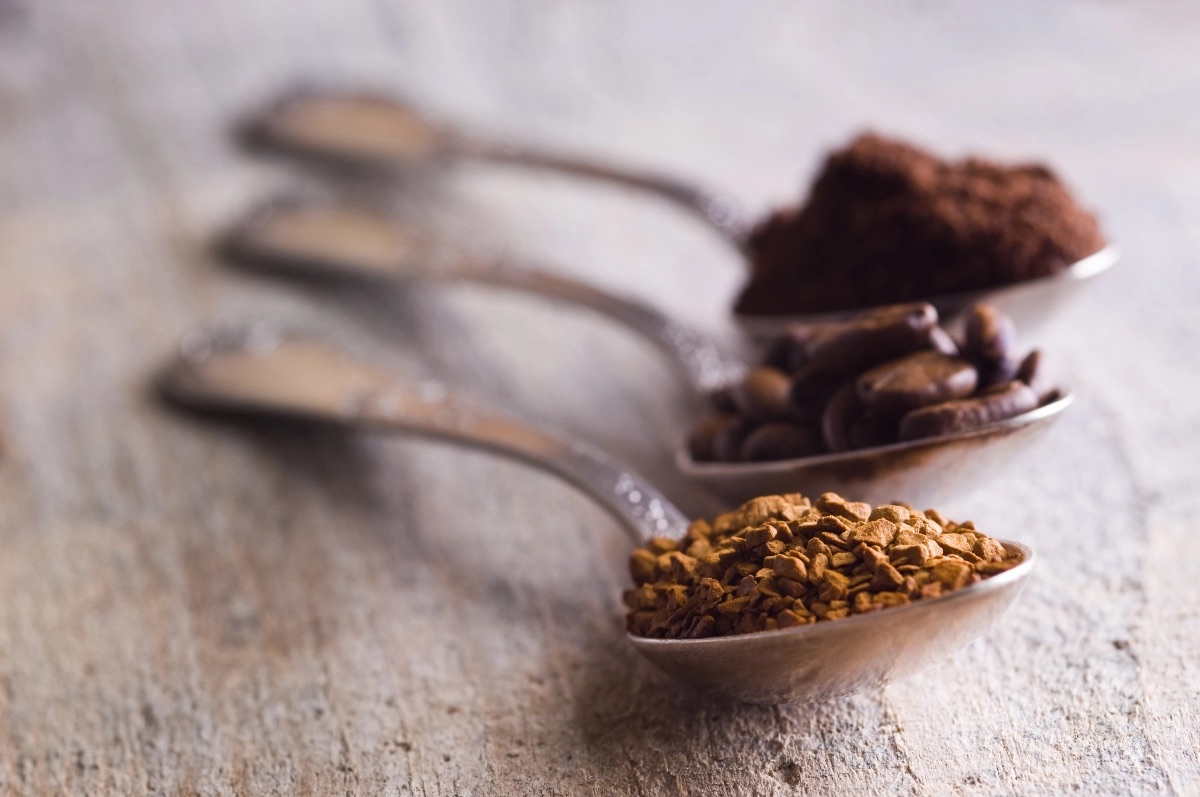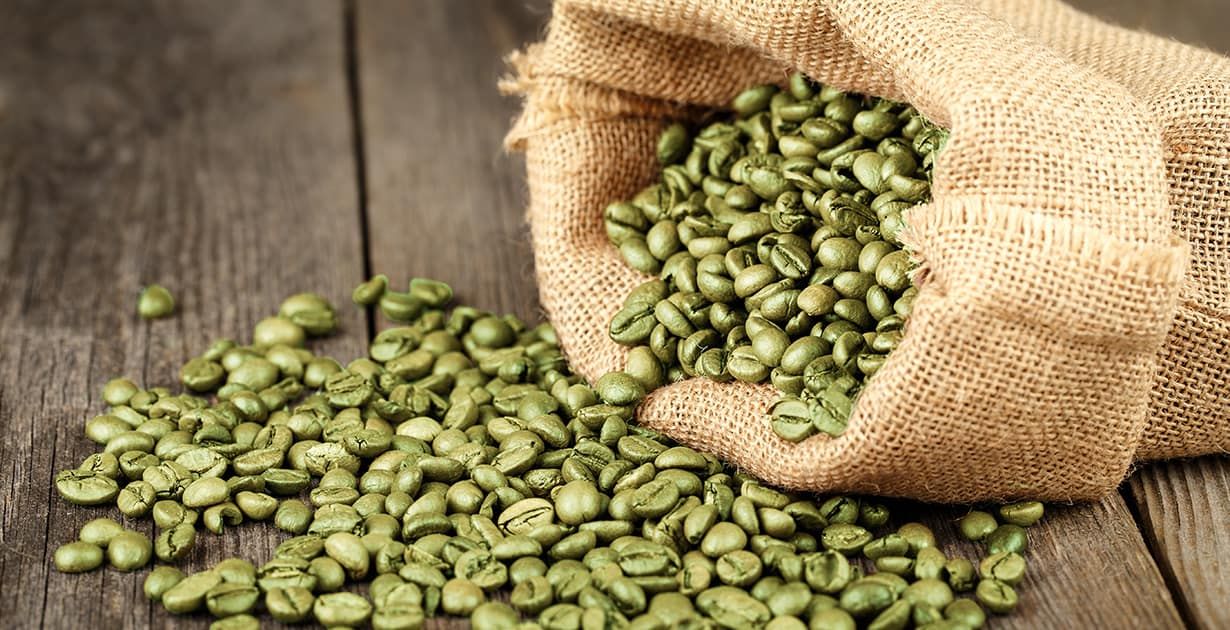

Articles
How To Store Coffee Long Term
Modified: January 18, 2024
Learn how to store coffee for long-term freshness with our informative articles. Discover the best methods and tips to keep your coffee beans tasting their best.
(Many of the links in this article redirect to a specific reviewed product. Your purchase of these products through affiliate links helps to generate commission for Storables.com, at no extra cost. Learn more)
Introduction
For coffee lovers, there’s nothing quite like the aroma and taste of a freshly brewed cup of joe. But what happens when you have more coffee than you can consume in a short period of time? To prevent your precious coffee beans from going stale, it’s important to know how to store them properly for the long term.
Storing coffee correctly not only helps to maintain its flavor and aroma but also extends its shelf life. The key is to protect the coffee from its enemies: air, light, moisture, and heat. By carefully considering these factors and following the right storage techniques, you can ensure your coffee stays fresh and delicious for an extended period.
In this article, we will explore the various factors that affect coffee shelf life and provide you with expert tips on how to store coffee for the long term. So grab your favorite mug, and let’s dive in!
Key Takeaways:
- Preserve your coffee’s freshness by storing it in airtight, non-reactive containers away from air, light, moisture, and heat. Enjoy optimal flavor by following proper storage and preparation techniques.
- For long-term storage, choose whole bean, single-origin, or dark roast coffee, and consider freezing in small portions. Maintain freshness by buying in small quantities, grinding just before brewing, and avoiding reheating.
Read more: How To Store Coffee For Long Term
Factors Affecting Coffee Shelf Life
Several factors can affect the shelf life of coffee, and understanding them is crucial to maintaining its freshness. Here are the key factors to consider:
- Air: Exposure to air is one of the primary enemies of coffee. Oxygen in the air reacts with the coffee beans, causing them to oxidize and lose their flavor. To prevent this, it’s essential to store coffee in an airtight container that effectively seals out air.
- Light: Coffee is highly sensitive to light, especially sunlight and fluorescent lights. The UV rays present in light can degrade the coffee oils and affect the taste. It’s best to store coffee in a dark container or a pantry away from direct light exposure.
- Moisture: Moisture in any form can quickly ruin coffee by causing it to deteriorate and grow mold. It’s crucial to keep coffee beans or grounds away from moisture and humidity. Avoid storing coffee in the refrigerator or freezer, as the temperature fluctuations can introduce condensation.
- Heat: Heat can accelerate the oxidation process and compromise the flavor and aroma of coffee. Storing coffee at high temperatures, such as near ovens or stovetops, can cause it to go stale quickly. It’s best to store coffee in a cool and dry place, away from heat sources.
By paying attention to these factors, you can minimize the deterioration of your coffee and prolong its shelf life. In the next section, we will delve into the optimal storage conditions for coffee to ensure maximum freshness and flavor.
Optimal Storage Conditions
Creating the ideal environment for storing coffee is essential to preserve its freshness and flavor. Here are the optimal storage conditions to keep in mind:
- Temperature: Coffee should be stored in a cool place with a stable temperature. Aim for a temperature range between 50-70°F (10-21°C). Avoid storing coffee in areas that experience temperature fluctuations, such as near windows or heating vents.
- Darkness: Light can quickly degrade the quality of coffee. Choose a storage location that is dark or use a container that is light-proof to protect your coffee from exposure to light. This will help maintain its aroma and flavor over time.
- Dryness: Moisture and humidity are coffee’s adversaries. Ensure that your coffee storage area is dry and free from moisture. Avoid keeping coffee in the refrigerator or freezer, as the moisture can compromise its quality.
- Airtightness: To prevent the oxidation of coffee, it’s crucial to store it in airtight containers. Sealed bags or canisters with airtight seals are ideal for preserving the freshness and flavor of coffee beans or grounds.
By adhering to these optimal storage conditions, you can extend the shelf life of your coffee and enjoy its delightful flavors for a more extended period. In the next section, we will discuss the importance of choosing the right container for storing coffee.
Choosing the Right Container
The container you choose for storing your coffee plays a vital role in maintaining its freshness and flavor. Here are some factors to consider when selecting the right container:
- Airtightness: Look for a container that has a tight-fitting lid or closure mechanism to ensure an airtight seal. This will prevent air from entering the container and causing the coffee to oxidize and go stale.
- Material: Opt for containers made of materials that are non-reactive and do not absorb odors, such as glass or stainless steel. These materials will help preserve the flavors and aromas of the coffee without introducing any unwanted elements.
- Size: Choose a container that matches your coffee consumption needs. It’s best to store coffee in smaller containers to minimize air exposure when opening the container. This will help maintain the freshness of the remaining coffee in the larger supply.
- UV Protection: If you prefer using transparent containers, ensure they are UV-resistant or have a dark tint to protect the coffee from UV light. This will help prevent the degradation of the coffee oils and preserve its quality.
- Convenience: Consider the ease of use and accessibility of the container. Look for containers with a wide opening for easy scooping or pouring of the coffee. Additionally, choose containers that are easy to clean and maintain.
Investing in a good-quality container that meets these criteria will help maintain the freshness and flavor of your coffee for an extended period. In the next section, we will discuss the types of coffee that are suitable for long-term storage.
Types of Coffee to Store Long Term
Not all types of coffee are suitable for long-term storage. Some varieties and preparations fare better than others when it comes to maintaining their freshness and flavor over an extended period. Here are the types of coffee that are ideal for long-term storage:
- Whole Bean Coffee: Whole bean coffee has a longer shelf life compared to ground coffee. The intact beans retain their flavor and aroma for a more extended period. It’s best to store whole bean coffee and grind it just before brewing to ensure maximum freshness.
- Single-Origin Coffee: Single-origin coffees, which come from a specific region or farm, tend to have distinct and robust flavors. These flavors can be preserved better during long-term storage, making single-origin coffees ideal for stocking up and storing.
- Dark Roast Coffee: Dark roast coffees are roasted for a longer duration, resulting in flavor-rich beans. The bold flavors and oils in dark roast coffee help preserve its taste and freshness for a longer time compared to lighter roasts.
- Vacuum-Sealed Coffee: Some coffee brands offer vacuum-sealed packaging, where the air is removed from the bag before sealing. This removes the oxygen that can deteriorate the coffee over time. Vacuum-sealed coffee tends to have a longer shelf life and retains its flavors well.
While these types of coffee are more suitable for long-term storage, it’s important to note that no coffee can retain its optimal freshness indefinitely. Coffee is at its best when consumed within a few weeks of roasting, so it’s always recommended to enjoy your coffee as fresh as possible.
Now that we’ve covered the types of coffee that are ideal for long-term storage, let’s move on to the next section, where we will discuss the necessary steps to prepare coffee for storage.
Read more: How To Store Ground Coffee Long Term
Preparing Coffee for Storage
Before you store your coffee for the long term, it’s important to prepare it properly to ensure its freshness and quality. Here are the necessary steps to follow when preparing coffee for storage:
- Choose Fresh Coffee: Start with high-quality, freshly roasted coffee. Freshly roasted coffee has the highest flavor and aroma potential, so it’s important to begin with the best beans possible.
- Allow Coffee to Degass: Freshly roasted coffee releases carbon dioxide, known as degassing, for the first few days after roasting. To avoid bloating the storage container, it’s best to let the coffee degas for 12 to 24 hours in a loosely covered container before transferring it to airtight storage.
- Grind Just Before Brewing (If Using Whole Bean): If you’re storing whole bean coffee, it’s recommended to grind the beans just before brewing. This helps to preserve the flavors and aromas of the coffee, as the ground coffee is exposed to air and deteriorates faster than whole beans.
- Allow Coffee to Cool: Whether you’re storing whole bean or ground coffee, it’s crucial to let it cool down completely before transferring it to the storage container. Hot coffee can create condensation inside the container, introducing moisture that can ruin the coffee.
- Measure the Appropriate Amount: Measure out the desired amount of coffee you plan to store. It’s recommended to store coffee in smaller quantities, as this reduces the amount of air that comes into contact with the remaining coffee each time the container is opened.
By following these steps, you can ensure that your coffee is prepared and ready for long-term storage. The next sections will provide specific instructions for storing whole bean and ground coffee, as well as tips for freezing coffee for extended storage.
Store coffee in an airtight container in a cool, dark place to maintain its freshness and flavor for the long term. Avoid exposure to air, light, heat, and moisture.
Storing Whole Bean Coffee
When it comes to storing whole bean coffee, the goal is to protect the beans from exposure to air, light, moisture, and heat. Here are the steps to effectively store whole bean coffee:
- Use an Airtight Container: Transfer the whole bean coffee into a clean, airtight container. Make sure the container has a secure lid or closure mechanism to create a proper seal and prevent air from entering.
- Avoid Transparent Containers: While it may be tempting to use transparent containers, it’s best to opt for containers that are not see-through or have UV protection to prevent light exposure. This helps preserve the coffee’s flavor and freshness.
- Store in a Cool, Dark Place: Find a cool and dry location to store the container of whole bean coffee. Avoid areas that are prone to temperature fluctuations, such as near windows or stovetops. A pantry or cupboard away from heat sources is an ideal choice.
- Avoid Freezing Whole Beans: It’s generally not recommended to freeze whole bean coffee, as the temperature fluctuations and moisture can negatively impact the flavor and aroma. Freezing is best reserved for ground coffee, as we will discuss later.
By following these steps, you can ensure that your whole bean coffee stays fresh and flavorful for an extended period. In the next section, we will now explore the appropriate methods for storing ground coffee.
Storing Ground Coffee
Storing ground coffee requires extra care to maintain its freshness and quality. Here’s how you can effectively store ground coffee:
- Use an Airtight Container: Similar to whole bean coffee, transfer the ground coffee into a clean, airtight container. Ensure that the container has a tight-fitting lid or closure mechanism to create a proper seal and prevent air from entering.
- Avoid Transparent Containers: Just like with whole bean coffee, it is best to avoid transparent containers for storing ground coffee. Opt for containers that are opaque or have UV protection to shield the coffee from light exposure.
- Store in a Cool, Dark Place: Find a cool and dry location to store the container of ground coffee. Keep it away from heat sources and areas prone to temperature fluctuations. A pantry or cupboard can provide the ideal storage environment.
- Avoid Frequent Opening: Limit the number of times you open the container of ground coffee to minimize exposure to air. Consider storing smaller portions in separate containers to reduce the need to open the main storage container frequently.
- Freezing Ground Coffee (Optional): If you have a large quantity of ground coffee and want to extend its shelf life, you can freeze it. Divide the ground coffee into smaller portions and place them in airtight freezer-safe bags or containers. Thaw only the portion you need and avoid repeated freezing and thawing to maintain the best quality.
Properly storing ground coffee in an airtight container and in the right storage conditions will help preserve its flavor and aroma for a longer duration. In the next section, we will dive into the optional method of freezing coffee for long-term storage.
Freezing Coffee for Long-Term Storage
Freezing coffee can be an effective method for long-term storage, helping to extend its shelf life while preserving its freshness. Here are the steps to freezing coffee:
- Divide into Portions: If you have a large quantity of coffee, divide it into smaller portions that you would typically use in a week or two. This allows you to thaw only what you need, minimizing the chances of repeated freezing and thawing.
- Wrap and Seal: Wrap each portion of coffee tightly in airtight freezer-safe bags or use vacuum-sealed storage bags to remove as much air as possible. Alternatively, you can use airtight containers specifically designed for freezer storage.
- Label and Date: It’s essential to label each package or container with the type of coffee and the date it was frozen. This will help you keep track of the coffee’s age and ensure you use the oldest frozen coffee first.
- Store in the Freezer: Place the wrapped or sealed coffee portions in the freezer. Make sure the temperature is set to 0°F (-18°C) or below to maintain the coffee’s quality. Keep the coffee away from strong-smelling foods to avoid any flavor absorption.
- Thawing and Using: When you’re ready to use the frozen coffee, transfer the desired portion to the refrigerator to thaw overnight. Once thawed, avoid refreezing it. Use the thawed coffee within a week for the best flavor and quality.
Freezing coffee can help to maintain its flavor and aroma over an extended period. However, it’s important to note that freezing alters the taste and texture of coffee to some extent. For this reason, it’s recommended to freeze coffee as a last resort and try to consume it within a few months for the best results.
Now that you know how to store and freeze coffee effectively, let’s move on to the next section for tips on maintaining coffee freshness even after opening the storage container.
Read more: How To Store Coffee Grounds Long Term
Tips for Maintaining Coffee Freshness
In addition to proper storage techniques, there are several tips you can follow to maintain the freshness of your coffee, even after opening the storage container. Here are some helpful suggestions:
- Buy in Small Quantities: Purchase coffee in smaller quantities that you can consume within a few weeks. This ensures you’re using coffee at its peak freshness and reduces the likelihood of storing it for too long.
- Grind Just Before Brewing: For the freshest cup of coffee, grind your beans just before brewing. Grinding exposes more surface area to oxygen and increases the chances of flavor loss, so it’s best to grind as close to brewing time as possible.
- Measure What You Need: Measure out the amount of coffee you need for each brew. This helps minimize waste and reduces the exposure of the remaining coffee to air and moisture.
- Avoid Scooping with Damp Utensils: Moisture can affect the quality of coffee. Ensure that your measuring spoons or scoops are completely dry before using them to scoop coffee from the storage container.
- Avoid Storing Near Strong Odors: Coffee can absorb odors from its surroundings, so it’s best to keep it away from strong-smelling substances like spices or cleaning agents. Store coffee in a location that is odor-free or has minimal scent transfer.
- Avoid Reheating Coffee: Reheating coffee can further degrade its quality, resulting in a less flavorful cup. Brew fresh coffee when needed and avoid reheating leftovers for the best taste experience.
- Regularly Clean the Storage Container: To prevent any build-up of oils or residues, clean the storage container regularly. Wash it with mild soap and warm water, ensuring it’s thoroughly dry before refilling it with fresh coffee.
By following these tips, you can maximize the freshness and flavor of your coffee, even after opening the storage container. Remember that coffee is a perishable product, and its quality will diminish over time, so it’s best to enjoy it within a reasonable timeframe.
As coffee enthusiasts, we all strive for that perfect cup of joe, and proper storage and freshness maintenance are essential steps in achieving that goal. By implementing these tips and techniques, you can savor every sip of your favorite brew.
With the knowledge you’ve gained in this article, you are now equipped to store your coffee for the long term while preserving its flavor and aroma. So go ahead, stock up on your favorite beans, and embark on a journey of endless coffee enjoyment.
Remember, there’s nothing quite like the joy of sipping a perfectly brewed cup of coffee, full of freshness and flavor!
Happy brewing!
Conclusion
Properly storing coffee for the long term is essential for preserving its freshness, aroma, and flavor. By understanding the factors that affect coffee shelf life and following the optimal storage conditions, you can ensure that your coffee remains delicious for an extended period.
Air, light, moisture, and heat are the enemies of coffee, causing it to go stale and lose its distinctive characteristics. To combat these elements, use airtight containers, store coffee in a cool and dark place, and avoid frequent exposure to air and moisture.
Choosing the right container for coffee storage is also crucial. Look for airtight containers made of non-reactive materials such as glass or stainless steel. Avoid transparent containers to prevent light exposure, and consider smaller containers to minimize air contact.
While whole bean coffee, single-origin coffee, and dark roast coffee are ideal for long-term storage, it’s important to note that no coffee can retain optimal freshness indefinitely. Coffee is at its best when consumed within a few weeks of roasting.
If you choose to freeze coffee for extended storage, divide it into smaller portions, wrap them tightly, and label them with the date. Thaw only the portion you need and avoid multiple freezing and thawing cycles.
By implementing the tips for maintaining coffee freshness, such as buying in small quantities, grinding just before brewing, and avoiding reheating, you can further enhance the flavor of your coffee even after opening the storage container.
In the end, the goal is to enjoy every sip of a perfectly brewed cup of coffee. Understanding how to store coffee for the long term ensures that your favorite brew remains fresh, fragrant, and full of flavor, creating a delightful experience with every cup.
So, take these guidelines to heart, go ahead and store your coffee with confidence, and indulge in the pleasure of a delicious and aromatic cup of joe every time you brew.
Happy brewing and savoring!
Frequently Asked Questions about How To Store Coffee Long Term
Was this page helpful?
At Storables.com, we guarantee accurate and reliable information. Our content, validated by Expert Board Contributors, is crafted following stringent Editorial Policies. We're committed to providing you with well-researched, expert-backed insights for all your informational needs.














0 thoughts on “How To Store Coffee Long Term”